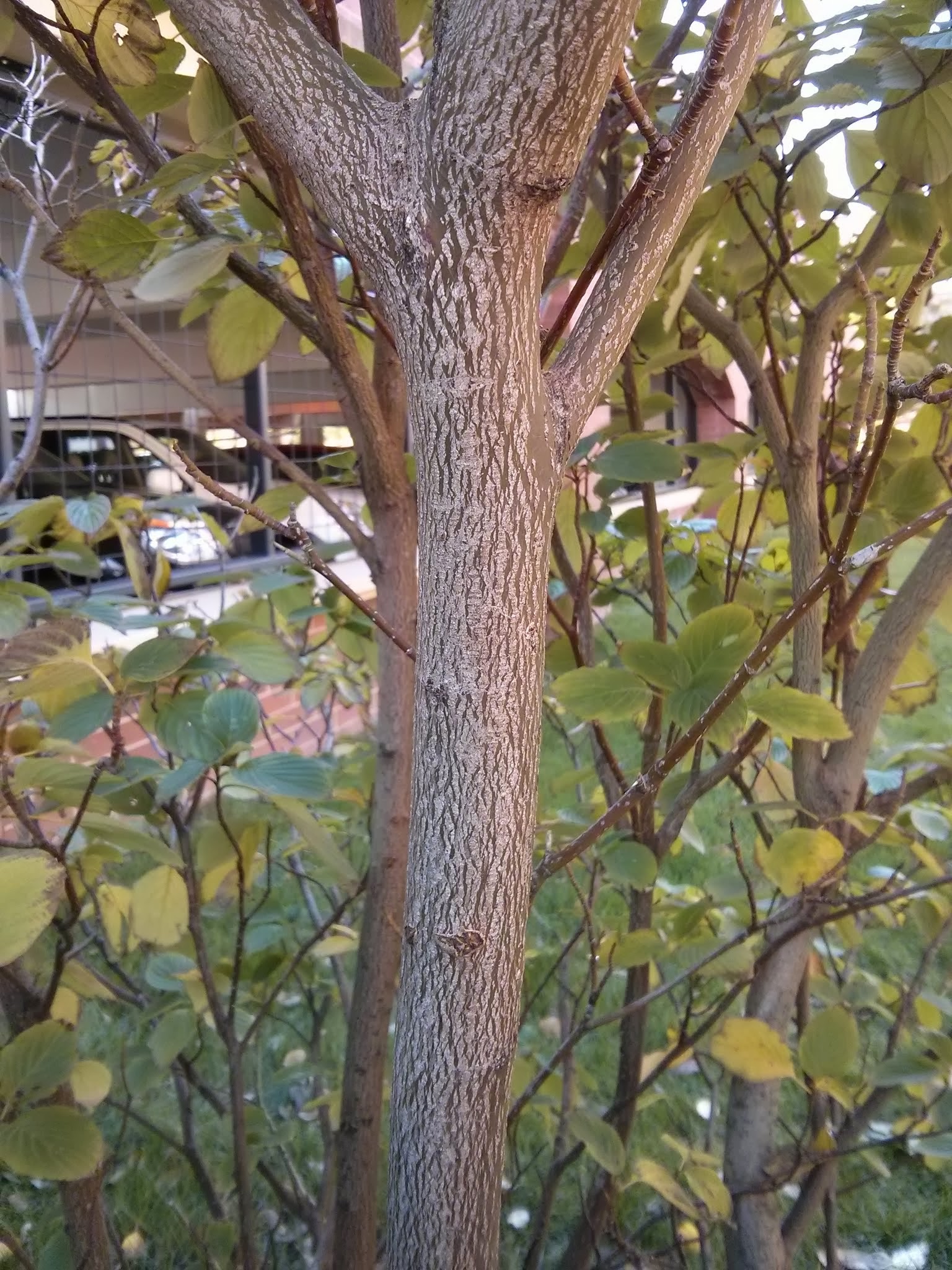Common Name: pagoda dogwood, alternate leaf dogwood
Scientific Name:
Family: Cornaceae
Genus: Cornus
Species: alternifolia
Hardiness Zone: 3 to 7
Height: 15 to 25 ft
Width: 20 to 32 ft
Common Characteristics:
Alternate leaf dogwood is also known as pagoda dogwood for its tiered horizontal branching, the trademark characteristic of this species. It can be a shrub or small tree with green, red, or purple branches with a distinctive flat-topped crown accompanied by a spreading horizontal branch architecture. The older parts of the plant, such as the trunk, are mostly smooth and wine-purple to brown with vertical tan lenticels. The leaves are simple in an alternate arrangement and oval in shape. They are green in the summer and turn reddish-purple in the fall. The flowers bloom from May to June which are fragrant and light yellow to cream-colored. After flowering, the dogwood will produce pea-sized fruits in clusters that are either green or bluish-black depending on the time of year. The buds of the plant, alternately arranged, are purple and slightly fuzzy/hairy.
Where it Grows:
Pagoda dogwood prefers slightly acidic, well-drained soil and part shade that is protected from the wind. When planted in full sun, place a layer of mulch around the base to moderate soil temperature and conserve moisture. It does tolerate dry sites. Pagoda dogwood can be found growing in both moist and dry forests, forest margins, stream banks, and fields.
How it's Used:
Pagoda dogwood can be planted as an ornamental specimen or in small groupings on residential property around homes, near patios, or in lawns. Also effective in shrub borders, woodland gardens, bird gardens, or naturalized areas.
Ecosystem Services:
The flowers are a nectar source for the Spring Azure butterfly which also utilizes the plant as a host site for its larva laying eggs on the flower buds. The fruit is bitter and enjoyed by a variety of native wildlife such as birds, bears, squirrels, pheasants, wild turkey, and grouse.
Where it is Native to:
The native distribution of the plant is mainly in the northeastern and upper midwestern United States stretching north into southern Canada.
Known Varieties and Their Traits:
-
Gold Bullion™ Pagoda dogwood (Cornus alternifolia ‘Bachone’): This cultivar is eight to 10 feet high and wide with golden-yellow foliage that turns chartreuse-yellow in the fall.
-
Golden Shadows™ Pagoda dogwood (Cornus alternifolia ‘W. Stackman’): A variegated form with creamy-white margins. It is best grown in part shade.
Problems:
Pagoda dogwood is susceptible to golden stem canker. The infected branches turn yellow to orange and eventually die.
References:
